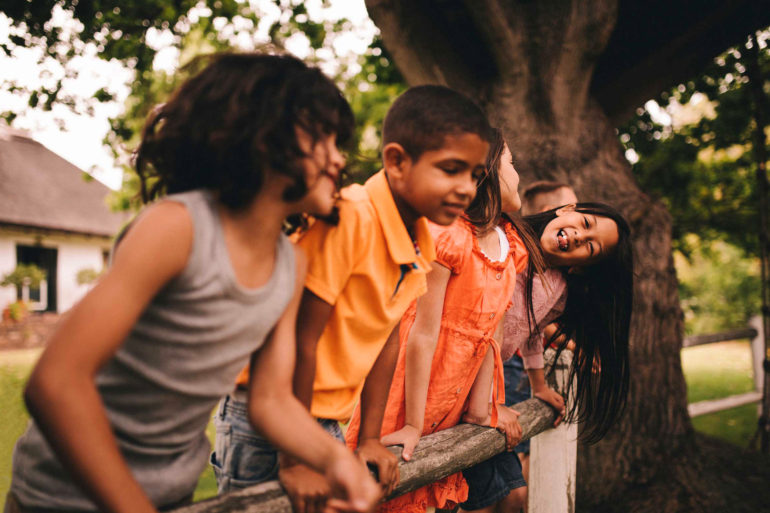During the past few years, Montana families and children have experienced a range of positive developments. Montana children overall are doing better than they were 10 or even five years ago. Our state has seen improvements in a variety of areas, including better health insurance coverage, lower child and teen death rates, lower substance abuse rates, lower teen birth rates and higher graduation rates.
All groups of Montana kids have seen these improvements – white, American Indian and Hispanic/Latino. However, because initial levels of well-being vary by race and ethnicity, these improvements have not changed existing disparity gaps. Children of color continue to lag behind those of white youth.
Montana KIDS COUNT is part of the national KIDS COUNT network, funded by the Annie E. Casey Foundation, which tracks and ranks child well-being in all 50 states. AECF’s 2016 data ranked Montana 24th out of 50 states, based on the status of the state’s economic well-being, education, health, and family and community variables.
One solution to improving our state’s ranking and closing the disparity gap is to ensure that children have the resources they need to succeed equally, not simply equal resources in order for all to succeed. Public dialogue is gradually shifting in this direction, from addressing inequality to addressing inequity, in the United States.
The two concepts reflect two different approaches to providing opportunity for America’s children. Equality means each child has access to the same resources, while equity means that each child has access to the particular resources they need to learn and thrive. Put differently, equality means that all children get a shirt, while equity means everyone gets a shirt that fits.
Inequity exists in all areas of the human experience. However, the main determinant of inequity in child well-being is a child’s race and ethnicity. In Montana, the consequences of inequity in the opportunities afforded to American Indian children and those available to white children are alarmingly noticeable.
These differences can be seen in the earliest years of a child’s life, where children of color grow up in environments that too often hinder healthy development. For example, health insurance coverage for white Montana children under the age of 5 is 96 percent, compared to 77 percent for American Indian children of the same age. This disparity results from the inequity in health care access and is evident in health outcomes, as more American Indian babies than white babies are born pre-term, born at low birth weight and born to mothers who did not receive adequate prenatal care. Babies born pre-term are also more likely to have health challenges as they grow older.
Inequity in educational opportunities maintains gaps in scholastic achievement. Only 13 percent of American Indian eighth graders test as proficient readers, compared to 41 percent of white youth. Children who struggle academically are less likely to graduate on time, pursue postsecondary education and obtain employment that pays well as adults. By extension, the unemployment rate for white adults is 4.3 percent, while for American Indian adults it is 20 percent.
Public systems designed to help children and families succeed have not always succeeded in providing opportunity to people of color. Many of our institutions, beliefs and cultural norms also operate in ways that do not benefit children of color. And sadly, these forces have normalized and legitimized over time, through custom, practice and policy.
Ignoring the continued existence of these fundamental inequities will result in a continued weakening of our social fabric. Our country’s diversity is evolving, and so is the path to future prosperity, global competitiveness and community strength, depending more and more on the success of all children, rather than the success of just one group.
In Montana, success for all children relies on the equity of opportunity afforded them, including American Indian youth and our growing population of Hispanic/Latino children. A system that builds and maintains barriers for non-white families threatens our universal right to “justice for all.”
Montana KIDS COUNT envisions a future where improving the outcomes for ALL children is a top priority for our state. To achieve this, policy changes must be made. Planning, budget and policy decisions must be rooted in data and research, which is why Montana KIDS COUNT works to provide state legislators, public officials and child advocates with the reliable data, policy recommendations and tools needed to advance sound policies that benefit children and families.


